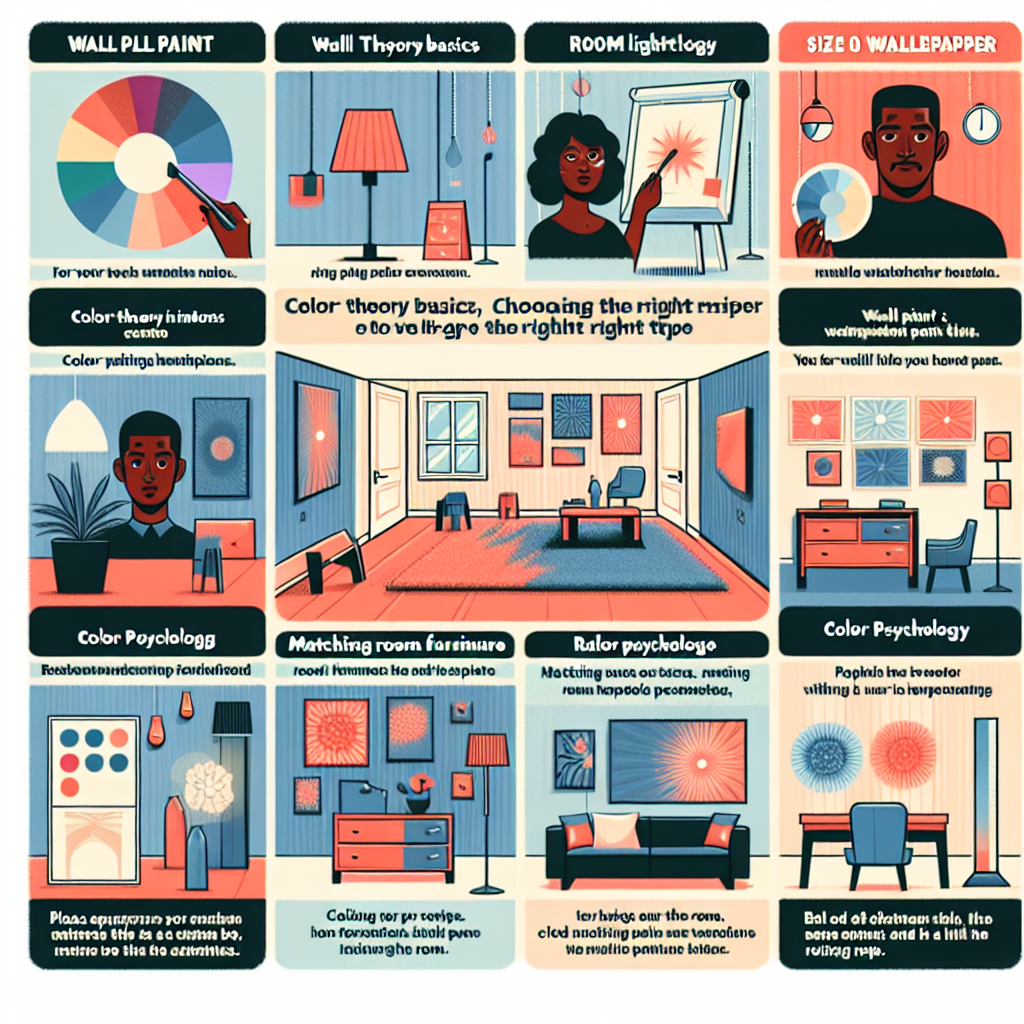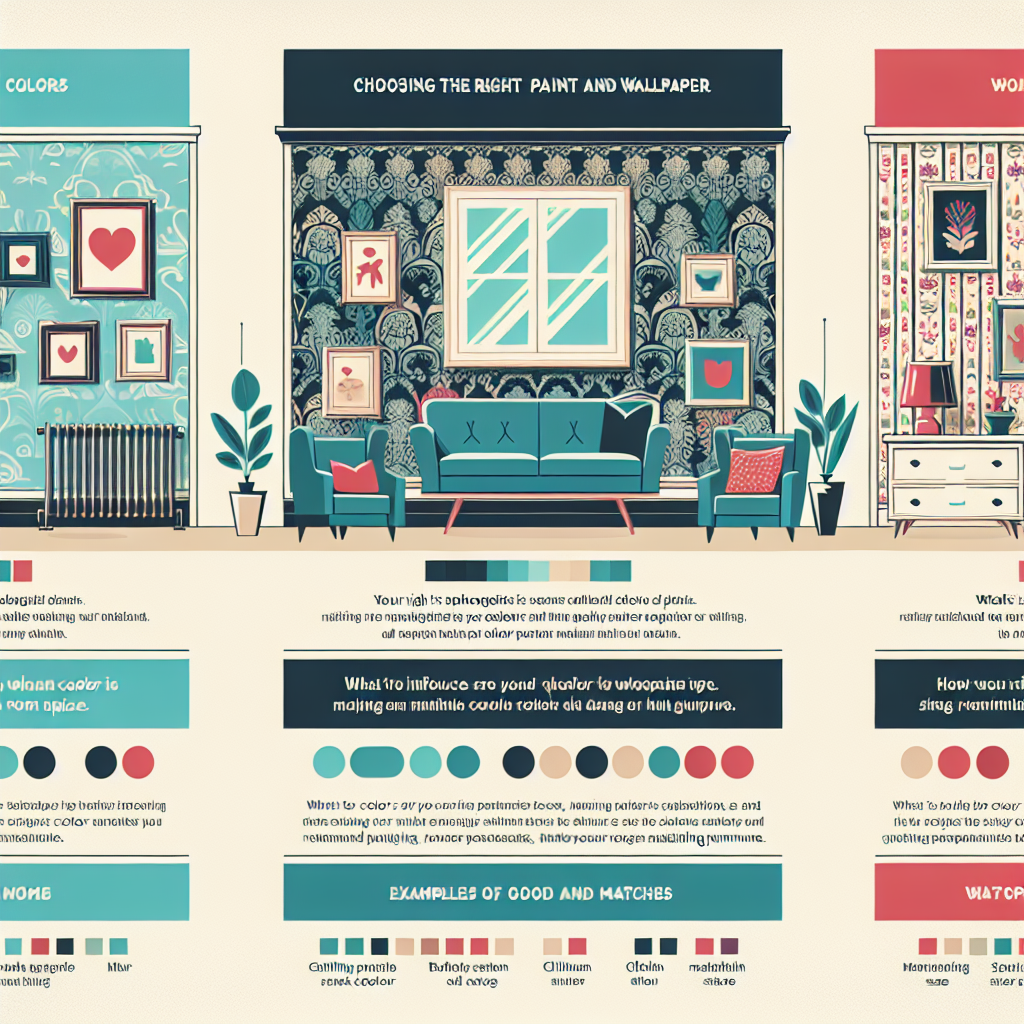Tips for Choosing the Right Wall Paint and Wallpaper

When it comes to transforming the look and feel of a room, few things have as much impact as the choice of wall paint and wallpaper. The right colors, patterns, and textures can completely change the atmosphere and style of a space. However, with so many options available, it can be overwhelming to make the right choice. In this article, we will provide you with valuable tips and insights to help you choose the perfect wall paint and wallpaper for your home or office.
Understanding the Importance of Wall Paint and Wallpaper
Before diving into the tips, it’s essential to understand why wall paint and wallpaper are crucial elements in interior design. Here are a few reasons why:
- Enhancing the aesthetics: Wall paint and wallpaper can add personality, style, and visual interest to a room. They can create focal points, highlight architectural features, and set the overall mood.
- Creating a cohesive look: The right choice of wall paint and wallpaper can tie together different elements in a room, such as furniture, flooring, and accessories, creating a harmonious and well-designed space.
- Reflecting your personality: Your choice of wall paint and wallpaper can reflect your personal taste, preferences, and individuality. It’s an opportunity to showcase your unique style and create a space that feels like home.
- Adding value to your property: Well-chosen wall paint and wallpaper can increase the value of your property. Whether you’re planning to sell or rent, a visually appealing interior can make a significant difference.
Choosing the Right Wall Paint
When it comes to wall paint, there are several factors to consider. Let’s explore some essential tips to help you make the right choice:
1. Consider the Room’s Purpose and Lighting
The purpose of the room and the amount of natural light it receives should influence your paint color selection. For example:
- Living areas: Warm and inviting colors like beige, light gray, or soft pastels work well in living rooms and dining areas.
- Bedrooms: Soothing and calming colors such as blues, greens, or lavender can create a relaxing atmosphere.
- Kitchens: Bright and vibrant colors like yellow or light green can energize the space and stimulate appetite.
- Home offices: Neutral colors like white, cream, or light gray can promote focus and productivity.
Additionally, consider the lighting conditions in the room. Rooms with ample natural light can handle bolder and darker colors, while rooms with limited natural light may benefit from lighter shades to create a sense of brightness.
2. Test the Colors
Before committing to a specific paint color, it’s crucial to test it in the actual space. Paint a small section of the wall or use sample boards to see how the color looks under different lighting conditions throughout the day. This will help you avoid any surprises and ensure that the color complements the room’s other elements.
3. Consider the Finish
The finish of the paint can significantly impact the final look and durability. Here are some common paint finishes and their characteristics:
- Matte: Provides a smooth, non-reflective finish. Ideal for hiding imperfections but may be less resistant to stains and harder to clean.
- Eggshell: Offers a slight sheen and is more durable than matte finishes. It strikes a balance between hiding imperfections and being easy to clean.
- Satin: Provides a soft sheen and is highly durable and easy to clean. Suitable for high-traffic areas like hallways and kitchens.
- Semi-gloss: Offers a noticeable sheen and is highly durable and easy to clean. Ideal for trim, doors, and cabinets.
Choosing the Right Wallpaper
Wallpaper can add texture, pattern, and depth to a room. Here are some tips to help you choose the perfect wallpaper:
1. Consider the Room’s Size and Ceiling Height
The size of the room and the height of the ceiling should influence your choice of wallpaper pattern and design. Here are a few guidelines:
- Small rooms: Opt for wallpapers with small patterns or vertical stripes to create an illusion of height and make the room feel more spacious.
- Large rooms: Bold patterns and larger prints can add drama and visual interest to larger spaces.
- Low ceilings: Avoid wallpapers with horizontal stripes or large-scale patterns, as they can make the ceiling appear lower.
- High ceilings: Embrace wallpapers with vertical stripes or patterns that draw the eye upward, accentuating the height of the room.
2. Consider the Room’s Style
Wallpaper can enhance the overall style and theme of a room. Consider the existing furniture, decor, and architectural elements when choosing a wallpaper design. For example:
- Traditional style: Opt for wallpapers with classic patterns like damask, floral, or toile.
- Modern style: Choose wallpapers with geometric patterns, abstract designs, or metallic accents.
- Minimalist style: Select wallpapers with subtle textures or monochromatic patterns.
- Eclectic style: Embrace bold and vibrant wallpapers with unique patterns and colors.
3. Consider the Wallpaper Material
Wallpapers come in various materials, each with its own characteristics and maintenance requirements. Here are a few common options:
- Vinyl: Durable, easy to clean, and suitable for high-traffic areas. It can be embossed for added texture.
- Non-woven: Easy to install and remove, as it can be stripped off the wall without leaving residue. It’s breathable and resistant to mold and mildew.
- Grasscloth: Made from natural fibers like grass, jute, or bamboo. It adds texture and warmth but requires more delicate care.
- Textile: Offers a luxurious and tactile feel. It can be made from silk, linen, or velvet, adding elegance to a space.
Frequently Asked Questions about “Tips for Choosing the Right Wall Paint and Wallpaper”
1. Can I use wallpaper in a bathroom or kitchen?
Yes, you can use wallpaper in a bathroom or kitchen. However, it’s essential to choose a wallpaper specifically designed for high-moisture areas. Look for wallpapers labeled as “vinyl-coated” or “washable” as they are more resistant to moisture and can be easily wiped clean.
2. How do I calculate the amount of paint or wallpaper I need?
To calculate the amount of paint you need, measure the height and width of each wall and multiply them together. Subtract the area of doors and windows. A gallon of paint typically covers around 350-400 square feet, but it’s always a good idea to check the manufacturer’s recommendations.
For wallpaper, measure the height and width of each wall and add them together. Divide the total by the square footage coverage listed on the wallpaper roll. Add an extra 10% to account for waste and pattern matching.
3. How can I remove wallpaper without damaging the walls?
To remove wallpaper without damaging the walls, start by scoring the wallpaper with a scoring tool or sandpaper to allow the removal solution to penetrate. Apply a wallpaper removal solution or a mixture of warm water and fabric softener to loosen the adhesive. Gently peel off the wallpaper using a putty knife or a wallpaper scraper. If necessary, repeat the process or use a steamer for stubborn areas.
4. Can I paint over wallpaper?
While it is possible to paint over wallpaper, it is generally not recommended. Paint may not adhere properly to the wallpaper surface, leading to peeling or bubbling. Additionally, if the wallpaper has a textured or embossed pattern, it may show through the paint. It is best to remove the wallpaper before painting for a smooth and long-lasting finish.
5. How often should I repaint or change wallpaper?
The frequency of repainting or changing wallpaper depends on various factors, such as the quality of the paint or wallpaper, the amount of wear and tear, and personal preference. On average, interior paint can last around 5-10 years, while wallpaper can last 10-15 years or longer. However, if you notice significant fading, peeling, or damage, it’s time to consider repainting or changing the wallpaper.
Summary
Choosing the right wall paint and wallpaper is a crucial step in creating a visually appealing and harmonious space. Consider the room’s purpose, lighting, and size when selecting colors and patterns. Test the colors and finishes before committing, and choose wallpaper materials that suit the room’s style and maintenance requirements. By following these tips, you can transform your walls into stunning focal points that enhance the overall aesthetics of your home or office.
For professional assistance with your wall paint and wallpaper needs, contact North Bay Contractors. Their experienced team can provide expert advice and high-quality services to help you achieve your desired look.

